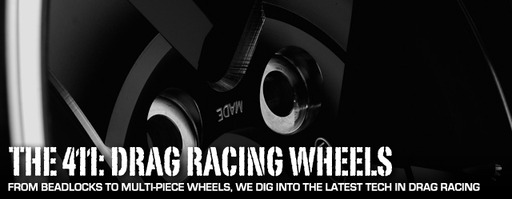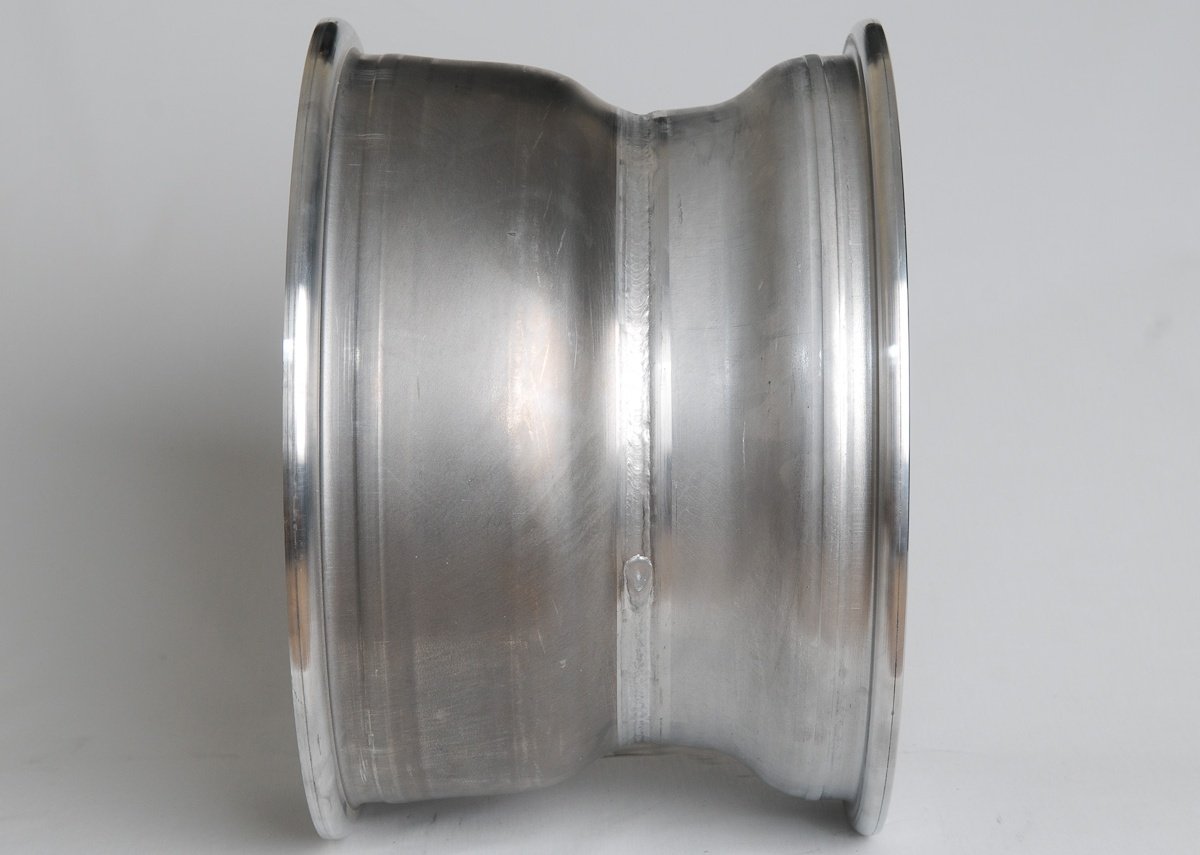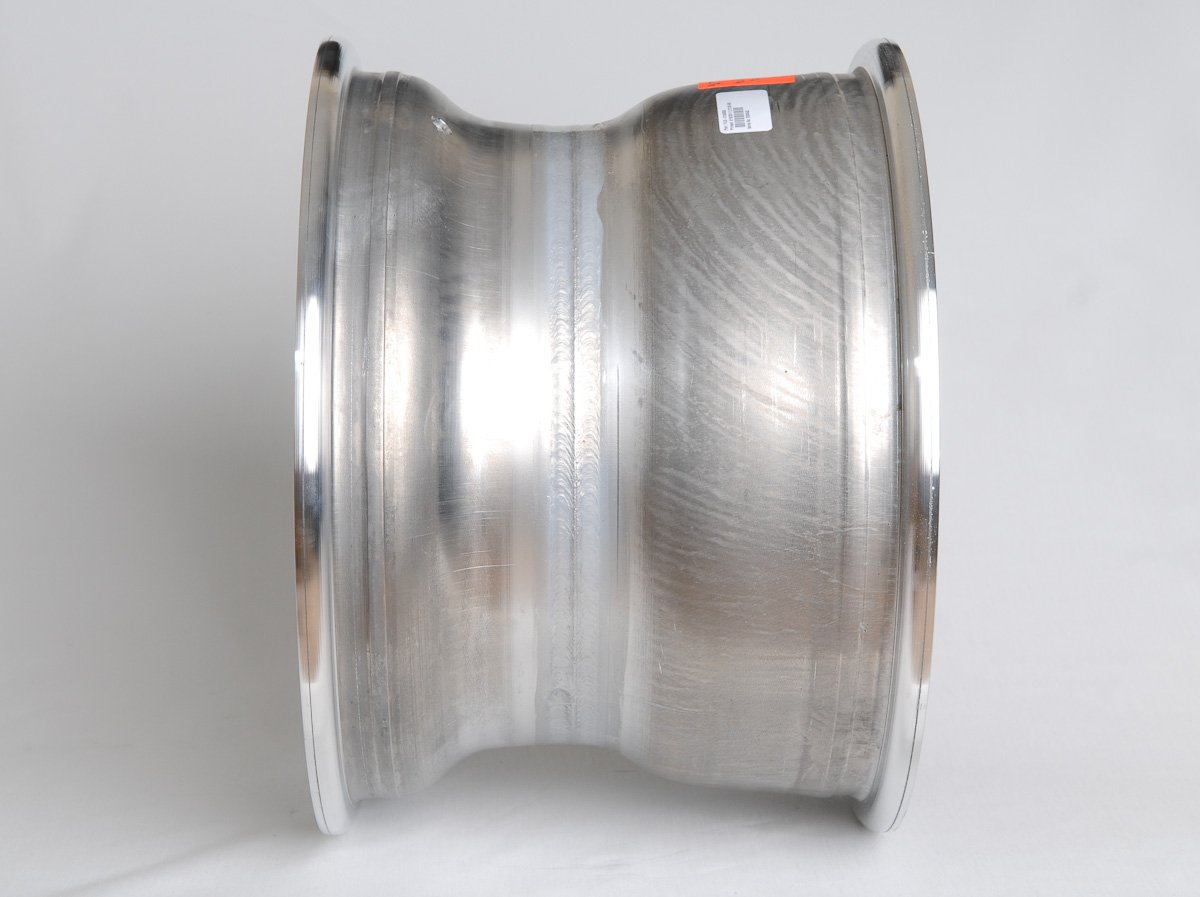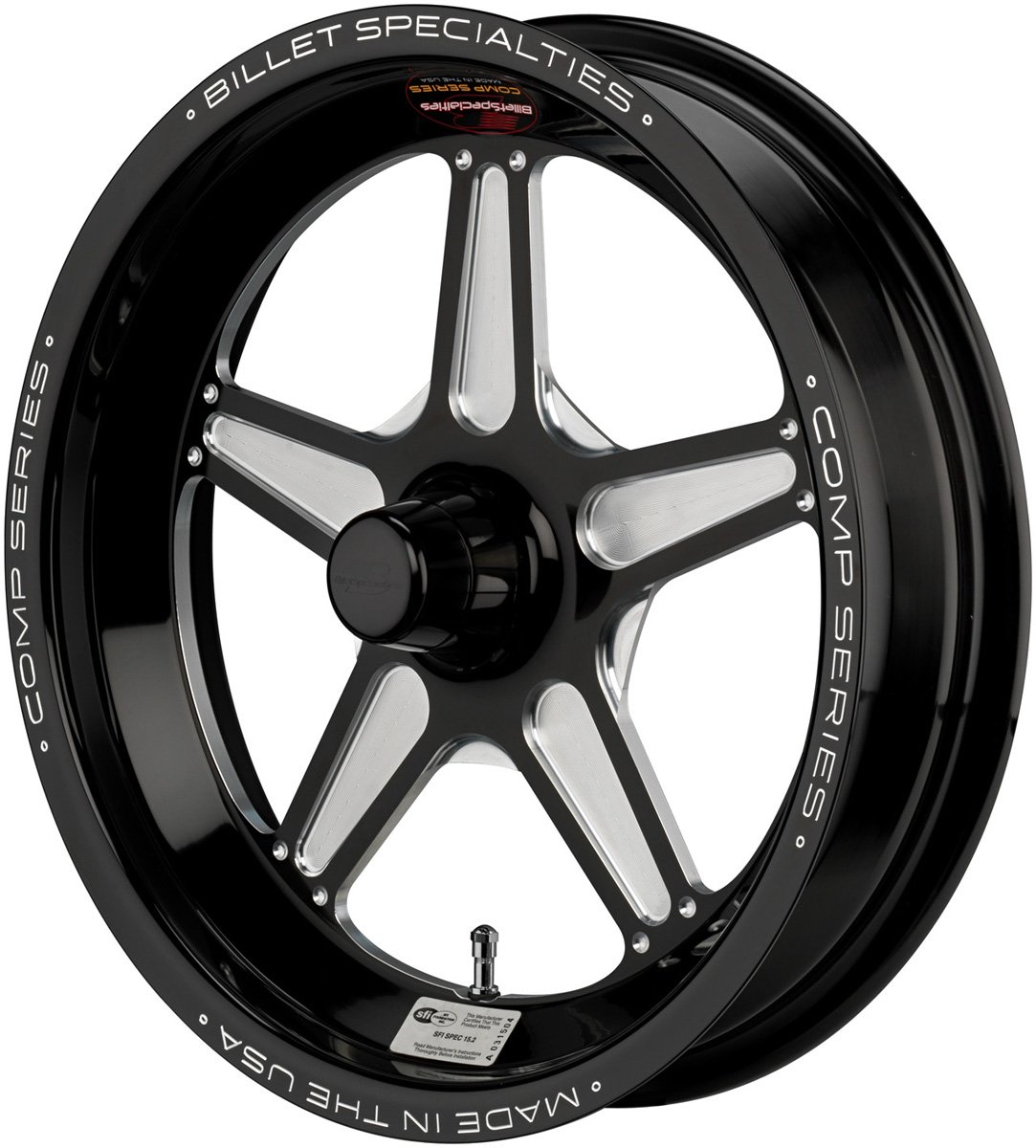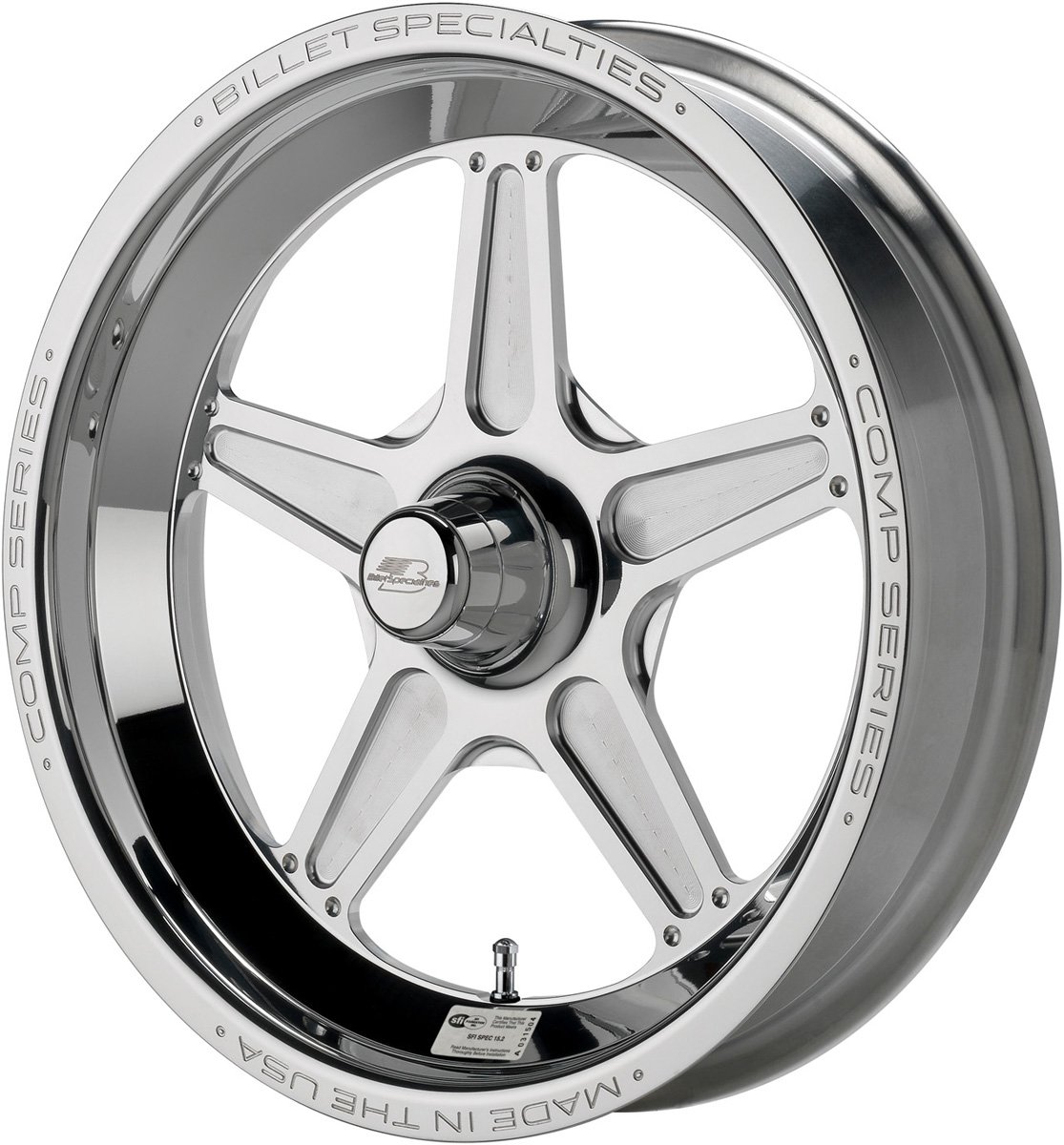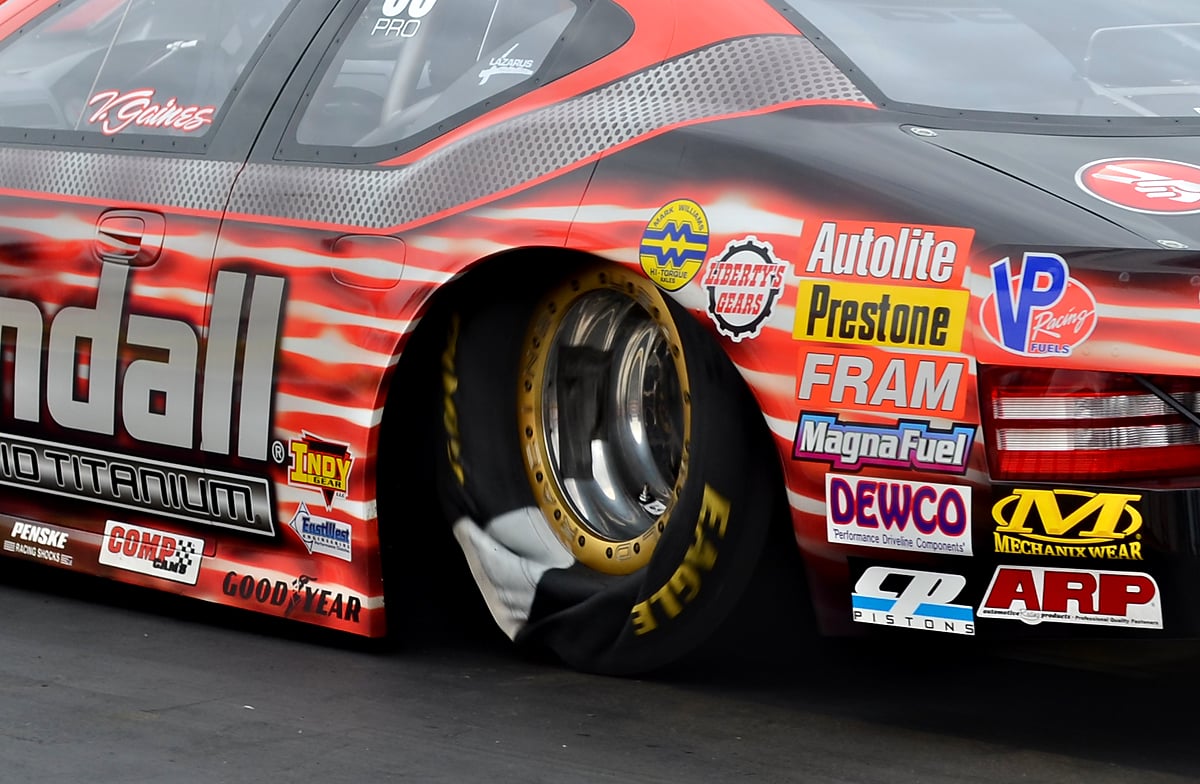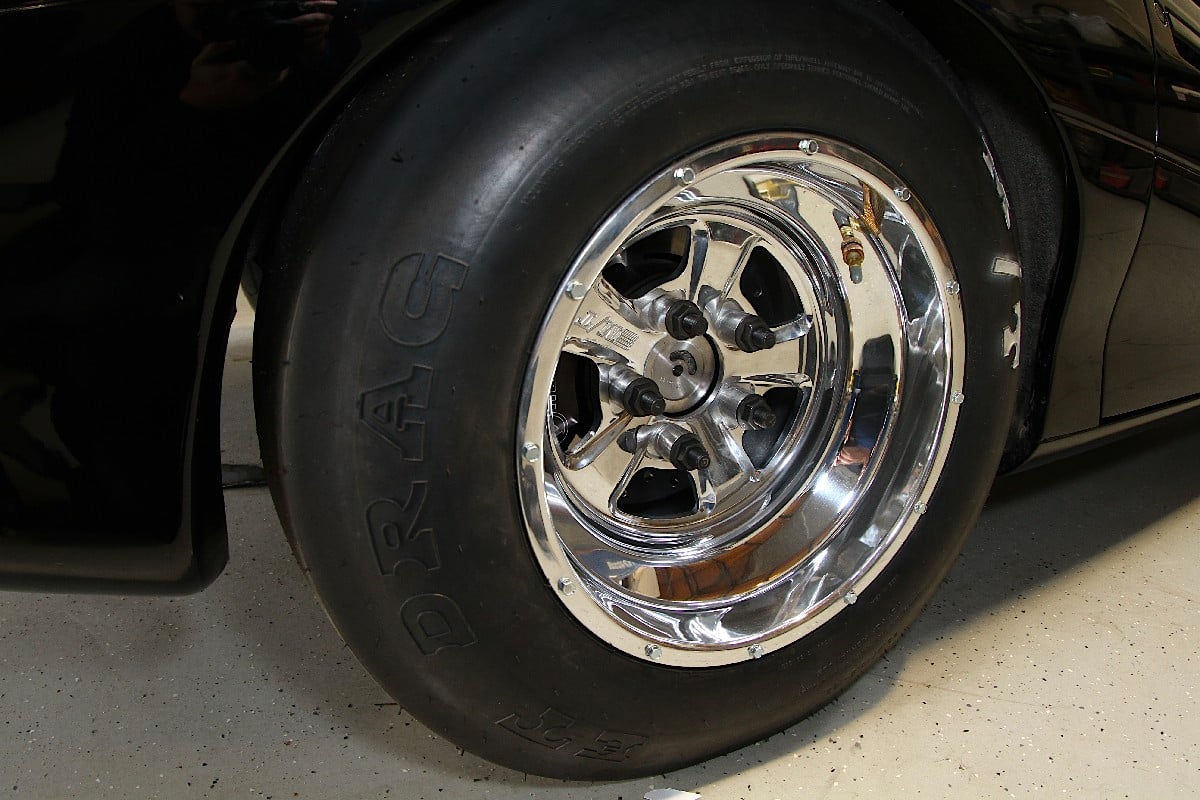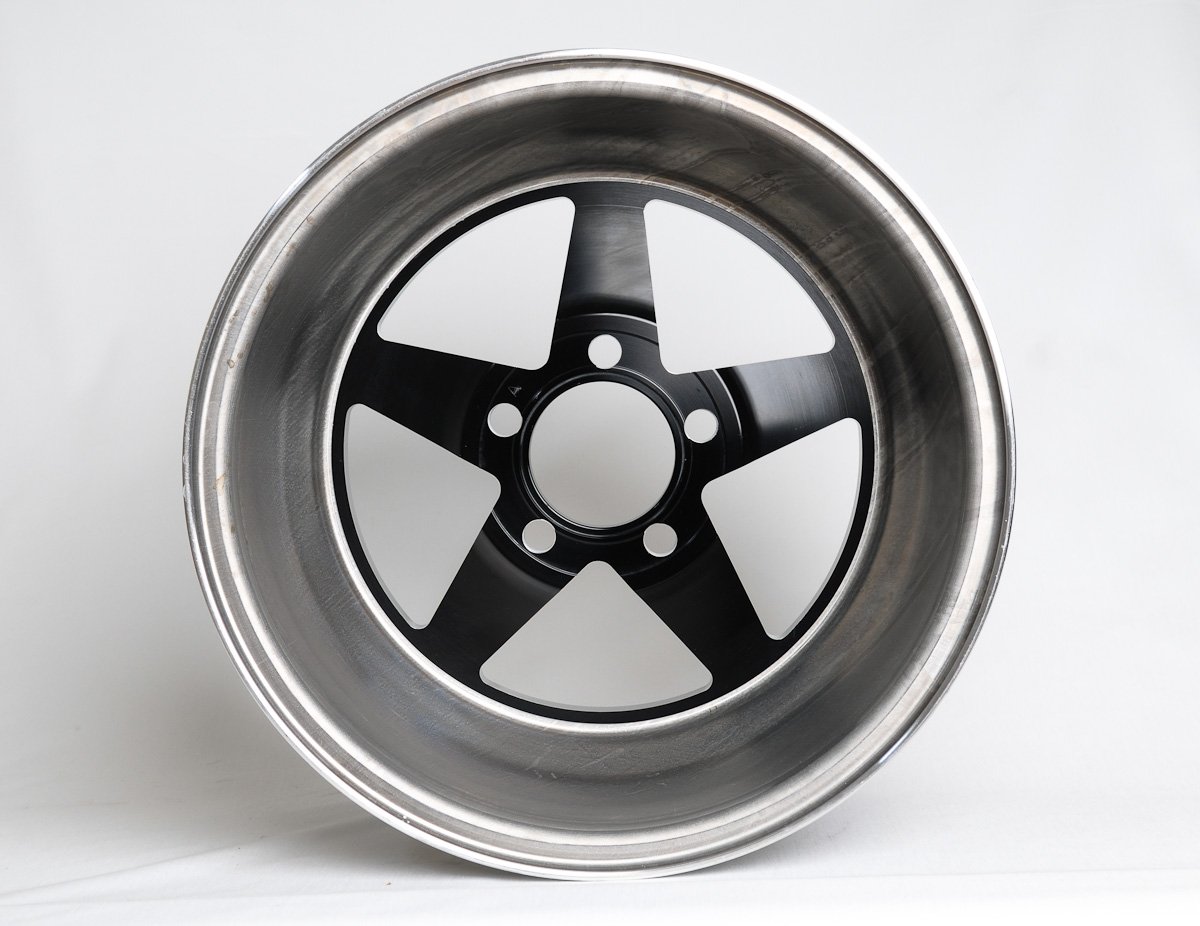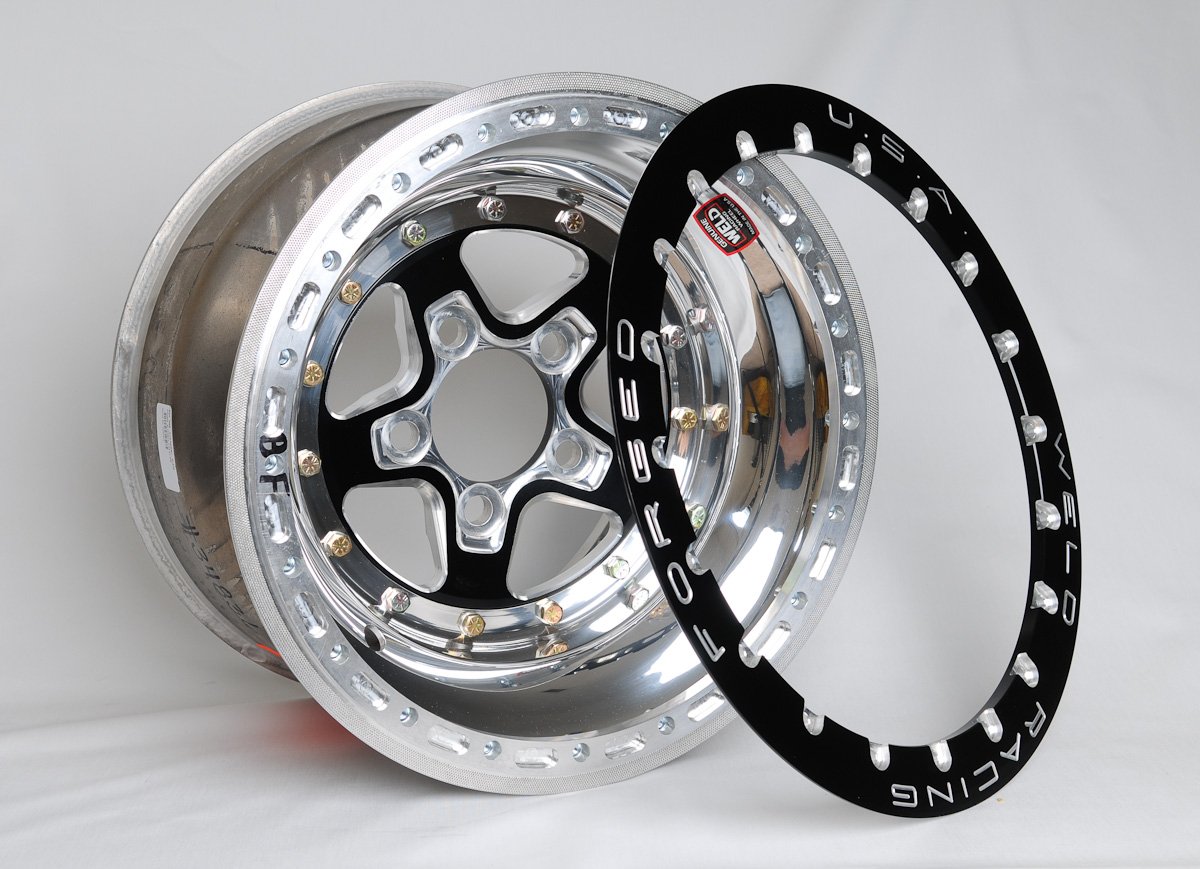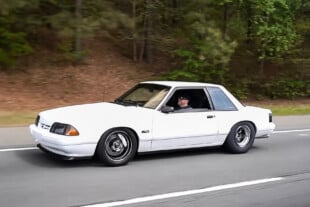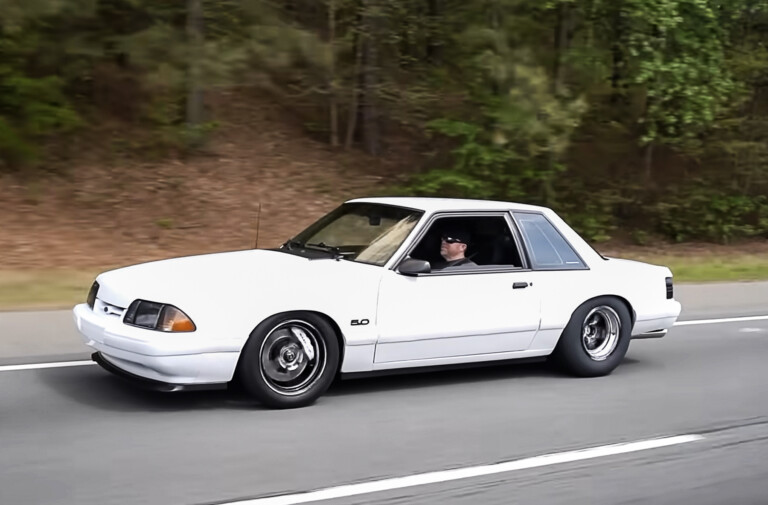High performance racing wheels may have killer looks, but they’re more than just a pretty face. Housed within the beads of those racing tires are wheels that are the result of decades of technological advancement and refinement to create a hoop that’s safe, true, lightweight, and able to handle the rigors of extreme power numbers and speeds.
In this technical piece, we’re going to dive into the world of racing wheels to bring you the 411 on the latest in drag racing wheel technology as we focus not only on the design and construction processes, but what goes into keeping the wheel and tire mated in the most intense of environs.
In order to learn more on the topic of racing wheels, seating methods, and manufacturing processes, we reached out to the industry experts at Weld Racing Wheels, Mickey Thompson Performance Tires & Wheels, and Billet Specialties to get the lowdown on today’s wheel technology for everything from your street/strip warrior to the Top Alcohol and nitro ranks. And taking a hands-on approach, we’ll be taking a look at five of Weld Racing’s popular rear wheels as we compare and contrast the options.
One Piece, Two Piece, Three?
Wheels are commonly constructed in three different manners: three-piece, two-piece, and most popular in racing applications – one-piece. As one might imagine, the one-piece construction offers a notable amount of weight savings over other designs, but that comes at a price. But there are other, perhaps more pressing, advantages to the one-piece design.
Here you can see a more detailed look at the combined halves of two and three-piece wheels manufactured by Weld Racing.
“When you machine something, it’s got a certain amount of run-out,” explains M/T’s Carl Robinson. “And when you take two pieces and put them together, it’s going to have more run-out.” Run-out is the term given for a measurement indicating how far true from round a wheel is.
Thus, as Robinson explains, the main idea behind the concept of one-piece forged wheels was to create a wheel with proper grain alignment and proper machining that would deliver less run-out; thus, an altogether better wheel. “It’s not taken apart and added to, it’s not welded together or bolted together; it’s a true one-piece wheel and it has to be better.”
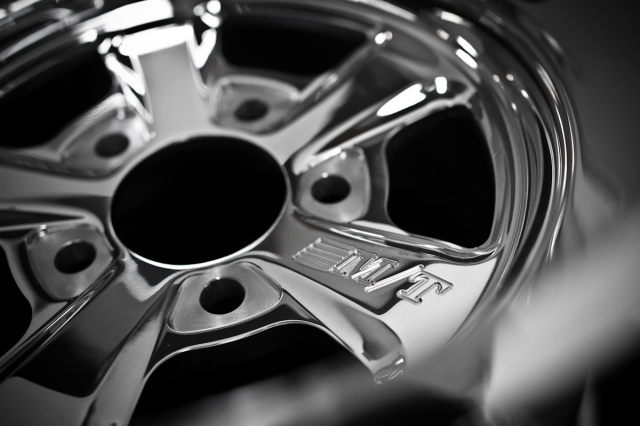
Mickey Thompson's Pro-5 Drag Wheels feature a fully forged and CNC-machined construction and finish, creating an exceptionally light and durable aluminum wheel. M/T offers these in both beadlock and non-beadloack varieties, along with a Pro-5 series bolt-on front wheel that surpasses all 15.1 SFI specs.
“When it comes to a minimal amount of material and a maximum amount of strength, the one-piece wheels make a lot of sense,” says Weld Racing’s Gregory Smith. All of Weld’s Pro Series drag racing wheels are one-piece, forged billet that’s been machined.
“One-piece wheel have an excellent run-out, because they’re turned on a lathe and machined, making them extremely true,” explains Billet Specialties Marketing Manager Scott Sandoval. “With our two-piece wheels, we go to extensive lengths in the manufacturing process to square the wheels and then check them at the bead seat squared off the bolt pattern, so we’ve never had issue making the run-out tolerance as solid as a one-piece wheel.”
With a two-piece wheel, two wheel halves, which can often both be out of round to some degree, are first welded together, then siliconed to prevent leakage and cracking from any discrepancies in the welds. This in turn leads to not only a heavier wheel, but one with less precision than a forged one-piece, making them less favorable for weight-conscious racers. They are, however, a great wheel for street and strip vehicles.
Billet Specialties' beautiful COMP 5 Series front and rear drag racing wheels.
“The two piece wheel is ideal for those that plan on driving their cars on the street. They’re much more affordable, and generally are more than strong enough to handle the rigors of the street,” said Sandoval. “Say you’re building a new car and want to drive it to work or to car shows, the two-piece wheel will allow it to follow the build of your car, negating the need to upgrade your equipment each step of the way.”
The three-piece – or ‘modular’ – wheel design, meanwhile, has been in use in racing applications since the 1970’s and is closer to the one-piece design in terms of weight, although still at the mercy of varying levels of runout. Modularity is popular for drag racing and other racing wheels for a number of reasons, according to Smith, beginning with the ability to create innumerable variations of widths and backspacing, because they’re being built from pieces.
Another advantage that the modular design offers is the ease of repair, as one can place a new shell on the wheel center. While more practical for oval track racers than drag racers, that possibility exists. And in that same context, because of the rigors that drag racing applications place on a wheel, the two wheel halves are typically welded together.
Bonding Time – Beadlocks, Rim Screws, Liners, and Glue
As anyone with any iota of mechanical knowledge understands, tires and wheels are designed as such that when the tires are properly inflated, the pressure within presses the bead against the inside of the of the wheel, keeping the tire on the wheel and the two rotating in unison. But as horsepower and speed increase, so too do the difficulties in maintaining the consistent connection between the wheel and tire. And in drag racing applications, where horsepower and speed amplify the forces placed not only on the wheel and tire but the fusion between these two entities to the extreme limits, the measures for maintaining that connection become paramount.
Over the decades, several differing methods for keeping the bead of racing tires firmly attached to the wheel have been developed, including beadlocks, rim screws, inner liners, and the use of glue. Each has it’s own rightful place and each can be effective when utilized in the right case. So let’s take a closer look at each of these methods and where they fit in the grand scheme of drag racing applications.
Rim Screws

Rim screws offer racers a simple, do-it-yourself method for increasing clamping force between the bead seat and tire, allowing for lower tire pressures and better grip in high horsepower applications.
Rim screws are still pretty popular, and obviously they’re an affordable way to secure the tire to rim. – Scott Sandoval
However, depending upon the car and the torque, when that tire pressure drops below in the neighborhood of 6-8 psi, the potential for tire slip comes into play. And this is where the logical first step – wheel, or rim screws – come into play. “Rim screws are still pretty popular, and obviously they’re an affordable way to secure the tire to rim,” says Sandoval.
Rim screws, just as the name implies, are screws placed in the seat of the wheel on both the inboard and outboard side that enter the tire bead, thus holding the tire to the wheel and allowing cars with more torque to run a lower air pressure to maximize grip.
There is a disadvantage to rim screws though, in that the holes will generally strip out after a couple of applications, rendering the wheel useless. Thus, tire manufacturers like Mickey Thompson suggest running as much air in the tire as possible, thus bypassing the need for rim screws. “If you can run without wheel screws, it just makes life a lot easier,” says Robinson.
In their wheel FAQ forum, Weld Racing supplies a guide to wheel screw installation and placement for those going this route on their own race cars. Recommended are 3/8″ hex washer-headed grade 8 tire screws, that are 1/4″ in diameter and 5/8″ long for the 45-degree entry into the radius shell of the wheel.
So how many screws should you use for your application? Weld’s guide supplies that information as well, with a table outlaying the number of screws based on eighth-mile elapsed times. Cars running 7.51 and slower need just six, 5.51 to 6.50 twelve, and 4.75 to 5.50 sixteen. For anything quicker than 4.75, double beadlocks are highly recommended, which brings us to our next section.
Beadlock Wheels

Beadlock wheels offer the utmost in clamping force between the wheel and bead seat of the tire as they physically clamp around the beads on both the inboard and outboard side of the wheel.
Unlike rim screws, which are a rather primitive form of technology by comparison, beadlocks are incorporated into the design and structure of the wheel and physically clamp the bead seats of the tire to wheel, fully inhibiting any slippage of the tire. For extreme types of drag racing applications, beadlocks are without question the safest and most functionally sound method of holding the tire to the wheel, but there are drawbacks, especially for those who don’t need them.
Explains Smith, “There’s a weight penalty with beadlocks, so if you don’t need beadlocks on your racecar, you don’t want them on there, because they’re certainly not going to make the car any faster.” Sandoval agreed, stating, “There is a weight disadvantage to the beadlocks, with the steel hardware used for the clamping. But once you get into the level of performance where you need them, your suspension is already set up for that, and you need it, because the car is going to launch extremely hard, and the tire would have a hard time holding on without them.”
There’s a weight penalty with beadlocks, so if you don’t need beadlocks on your racecar, you don’t want them on there, because they’re certainly not going to make the car any faster. – Gregory Smith
Adding to the safety and superior clamping ability, beadlocks also promote decreased levels of tire shake. “With beadlocks, there isn’t just a single stress point pulling up on the tire, creating less distinct and deep bows in the tire. The propensity for tire shake is reduced. It doesn’t mean that it will go away, just less likely to occur. ” Smith says. Beadlocks also stiffen the sidewall’s reaction to squat upon launch as the tire tends to be more vertical, meaning the tire will hit the contact patch harder at launch.
To construct beadlock wheels, Weld racing, Mickey Thompson, and other manufacturers cut the other lip off of the formed shell and weld on the forged inner surface of the beadlock, which receives the threaded portion of the bolts from the outer ring of the beadlock.
Beadlock wheels are the only way to go for extreme high horsepower applications where horsepower and torque require the strongest of clamping forces between the wheel and tire. In many categories, including Funny Car and Pro Stock, beadlock wheels are mandated for safety purposes.
According the experts that we spoke with, the primary benchmark requiring the need for beadlocks wheels is the 200 mile per hour mark. Another rule of thumb are sub-one second 60-foot times, and vehicles putting down 1,200 to 1,500 horsepower are considered in the beadlock realm, although weight and torque also play a significant role in the need need for them. Due to these requirements, beadlocks are the primary (or only) ticket for Top Fuel Dragsters and Funny Cars, Top Alcohol cars, Pro Modifieds, Top Dragster, Top Sportsman, and cars of similar performance capabilities.
Inner Liners
Top Alcohol Dragsters, Funny Cars and Pro Modifieds are prime users of what’s known as inner liner wheels, which work by pulling the bead into place from the inside with what’s essentially another tire that’s inflated to a pressure much higher than the outer tire, holding the bead to the wheel through the use of said pressure.

Inner liner wheels utilize a tube-like liner inside the tire that's inflated to a specified pressure and serves as the clamping force between the wheel and tire through contact between the two entities. These types of wheels and tires are commonly used in Top Alcohol Dragsters, Top Alcohol Funny Cars, and Pro Modifieds.
Wheels intended for inner liner use have hatches in the bead seat area, providing the contact patch for the liner to hold the tire and wheel together. And if you’ve ever seen one, you could definitely tell the difference between it and a standard liner-less wheel.
Last year, Weld Racing developed a new wheel specifically for liners that, instead of a standard crosshatch, features a horizontal crosshatch across the rim lip that prevents the tire from slipping separate of the liner. Weld’s engineers were encountering such movement on Pro Modified cars that prohibited removal of the tire because the stem position had moved, not giving access to release the air from the liner.
Not Quite Elmer’s Glue
Ever since kindergarten when we first received our education in construction paper and glitter, glue has been a means of adhering one entity to another. And even as we’ve moved on past Elmer’s Glue and Star Wars lunchboxes to the world of nuts and bolts and excessive amounts of technology in our grasp, glue still has its use.
The inherent design of today’s incredibly popular Drag Radial tires make them detrimental to the use of rim screws, although beadlocks will do the trick. Mickey Thompson’s Carl Robinson explains that Mickey Thompson, one of the leading suppliers of Drag Radial tires, doesn’t suggest the use of wheel screws with the Drag Radials, and thus, in addition to beadlocks, glue has become a common item around the pit area.
Mickey Thompson's slick Pro-5 rear wheels on our Project BlownZ Radial/Limited Street Chevrolet Camaro.
According to Robinson, two different reasons exist for the movement of radial tires on the wheel. The first of those being the relatively low tire pressures, and secondly, the use of wheels that don’t have a machined-to-size bead seat diameter. In other words, a spun, rolled, or other style of wheel that don’t have a machined surface touching the beat seat. “We’ve found that the difference between our tires and other brands of tires can even be the difference between slipping and not,” explains Robinson. “It’s just that little bit of difference. But if the wheel is undersized, the tires will be more inclined to move – be it radial or bias play.”
While beadlocks are a great choice for six-second, 200-plus mile per hour cars, those very same cars, according to Robinson, have performed quite well using heavy duty glues to glue the tire to the wheel. Explains Robinson, “we absolutely suggest if you’re going to do one treatment to the tire, you need to do it to both beads – never do it on just one bead. And we also recommend not using an outer beadlock only, because you’re holding the tire two different ways. The tire isn’t going to show you that, but just in theory, it’s not a good idea.”
As a final caveat, it’s advised to never mix and match clamping methods from the inboard and outboard sides of the wheel, nor clamp one side and not the other. This leads to what Smith terms as “out of phase, meaning the tire is well on it’s way to destruction. A tire will typically not live very long at all out of phase,” he explains.
How Much Do They Weigh? Looking at Weld’s Wheel Weights
 Weld Racing was kind enough to send us five of their popular street and strip performance and sportsman drag racing wheels to review and compare the weigh difference between each model.
Weld Racing was kind enough to send us five of their popular street and strip performance and sportsman drag racing wheels to review and compare the weigh difference between each model.
Weld Star 15×10″
Weight: 16.4 lbs
Seen here is the black anodized version of the Weldstar wheel. These are three-piece, forged modular wheels that are impressively light and strong, resulting in improved elapsed times on the track, reduced braking distances, and an improved ride quality on the street or the track.
RT-S Low-Pad 15×10″
Weight: 14.5 lbs.
Weld Racing's popular new street and strip RT-S wheel.
The RT-S series of wheels is one of Weld’s latest and most popular product lines, bringing application flexible racing technology to street with these affordable three-pice modular wheels. These classic five-spoke star wheels feature a forged billet center with cold forged rim shells, and are offered in three different pad heights to clear specific drum and multi-piston opposed calipers. The RT-S wheel that we received, the “low pad” variety, is suitable for cars with drum brakes, early disc brakes, or aftermarket drag racing brake systems. also offered are “medium” and high” pad wheels for classic vehicles and those with large aftermarket brake systems.
Aluma Star 2.0 15×10″
Weight: 12.5 lbs.

Weld Racing's Aluma Star 2.0 wheels are the second generation of one of the most popular drag racing wheels in the industry.
The Weld Racing Aluma Star 2.0 is best characterized as true, lightweight, and incredibly strong. These are also one of the most popular professional drag racing wheels in the industry, thanks their styling and weight. Version 2.0 features a 100% forged 6161 T-6 center and is designed and manufactured to SFI 15.1 specifications. In addition to the rear wheel seen here, Weld also offers Aluma Star 2.0 double bead-loc rears and front wheels for both dragster and full bodies cars. Aluma Star 2.0 wheels are for drag racing applications only.
Aluma Star 2.0 Black Anodized Double Bead-Loc 15×10″
Weight: 18.7 lbs.
Another of the aluma Star 2.0 offersings from Weld, this black anodized wheel features double bead-loc's for those high horsepower applications where they're needed.
If you want your race car to look fast sitting still, this black anodized Aluma Star 2.0 with a black anodized double bead-loc is the ticket. Version 2.0 of one of the most popular wheels in all of professional drag racing features a new, 100% forged center. Built for all classes of drag racing, this is one of the lightest and truest aluminum drag racing wheels made. They’re also manufactured to SFI 15.2 specs.
The black anodized Aluma Star 2.0 wheels are available in varying sizes with or without the bead-loc’s, along with front wheels for both dragsters and full bodied cars.
ProStar 15×10″
Weight: 15 lbs.
The 96 Series wheels have a brilliantly polished finish, and are one of the straightest and roundest wheels on the market. Precision manufactured from cold forged aluminum, these ProStar wheels have superior strength at a weight lighter than similar wheels.
Make no mistake, the look of a wheel is important to each and every one of us, and each of us have our own tastes. Looks matter, but as we hope we’ve illustrated in this look at the different designs and elements of drag racing wheels, there’s more to the selection process than simply cosmetics. Chances are, you already know what what your race cars needs – be it wheel screws, beadlocks, inner liners, or nothing at all – but if you aren’t, we suggest finding a wheel or wheels that tickle your fancy and reach out to the expert customer service staff at the manufacturer for further assistance in bolting the right wheel to your car the first time.



